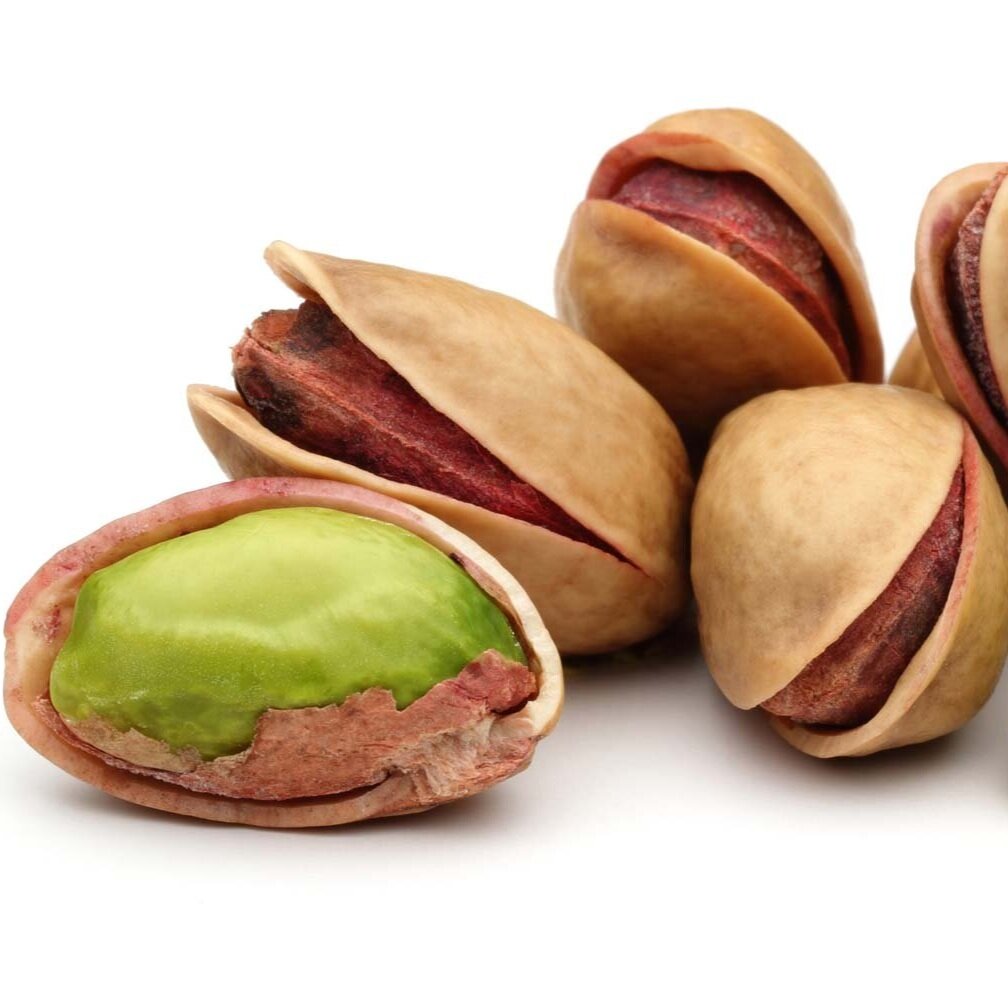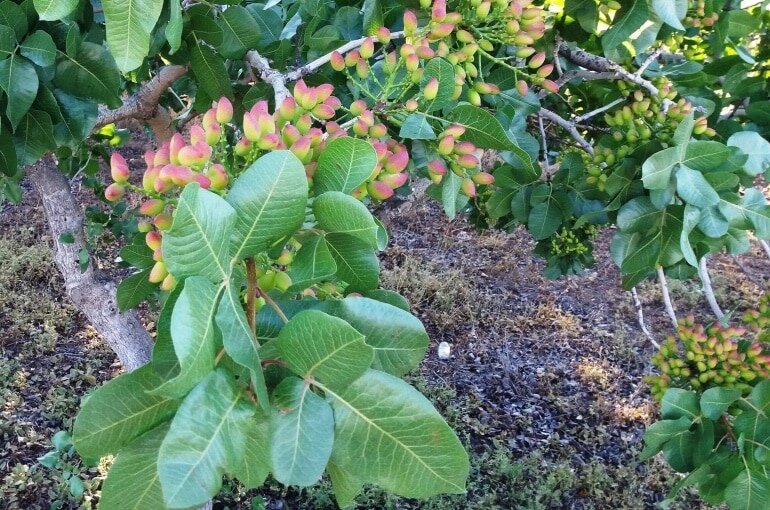Information
How to Grow Pistachio Nuts (Pistachio vera)
Pistachio nuts grow on small to medium sized deciduous trees. Trees will grow from 3-6m wide and tall depending on soil quality and amount of water applied. They can be pruned to bushes or espalier. Male and female trees are required to enable pollination and the pollen is carried from male to female flowers on the wind. They are hardy trees that do well where winters are cold and summers hot and dry. They are frost hardy. Pistachio trees need a cold winter to enable adequate chill to flower properly and set the nuts. They will grow in most sunny places in southern Australia other than in some mild coastal areas. Pistachio are unsuited to areas with humid or wet summers because the nuts are easily spoiled by fungal disease. This will always occur where humid weather and showers are common in summer. Spoiled nuts are dangerous and must not be eaten.
Our nursery trees should flowers in the second season and could yield some nuts then. Fruit set can be forced by shaking pollen over the female flowers in October. Crops will begin to self set in 3-4 years but yields will continue to rise for many years afterwards.
Growing conditions
Pistachio trees are quite tolerant of limestone, sandy and clay soils if they are not waterlogged for an extended time. They become very drought hardy although nut yield will increase if trees are watered. They will grow on water that may be too salty for many other trees.
Pistachio trees are best planted in the cooler months. Plant males and female from 2 to 6m apart. The male tree should be upwind of the female tree according to the most common prevailing winds in October when the trees are flowering.
Planting
At planting, tease out any circling roots at the bottom of the root ball and spread them as widely as possible in the planting hole. Water in thoroughly. Irrigate weekly in at least the 1st 2 years until well established. Further regular irrigation throughout the life of the tree will result in faster tree growth, quicker maturity and higher yield. Fertilize with general fertilizer in August and May.
Beware rootock growth
Pistachio trees are grafted, and it is important to know where the graft is located. Beware of growth from the rootstock. Check carefully in spring for buds that begin to grow below the graft. This is critical in pistachio as rootstock growth will ruin the plant if left unattended.
Nut develpment
The husks of the nuts grow quickly though summer and are full size by early February. The kernel develops late in the cycle and fills the shell in late February. When the nuts are ripe the soft husk changes colour from a bright red blush to a pastel pink. You can tell when the fruit is ripe as the husks will easily rub off the shells when the nuts are ready. Many nuts will split the husks and shell revealing the green coloured kernel inside. If the colour does not change and husks will not rub off, then the nuts have not been pollinated and have no kernel. The shells will be empty.
The kernels can be eaten fresh from the tree as soon as they are ripe. They are delicious in this state. They can be dried in a sunny dry place or in a kitchen dryer. If properly dried they keep well for a long time. Beware of insect attack on dried nuts.
Always harvest, dehusk and dry your nuts as soon as possible after ripening as they deteriorate quickly if left on the tree. Never eat mouldy nuts. Aflatoxins may be present in poorly handled nuts.
The nuts can be brined and roasted by drying in an oven or a microwave.
The dominant variety Sirora was selected by CSIRO in the 70’s. It is productive and flavoursome.



